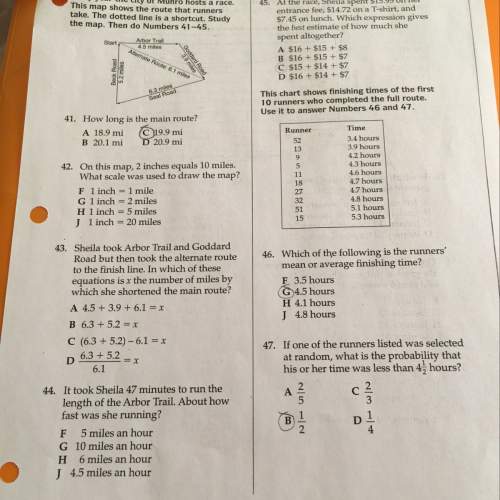
Mathematics, 10.02.2021 19:10 elreemali03
Introduction
You have probably known how to multiply numbers for a long time. For one-digit numbers, memorization is usually the technique used to multiply them. While you know that 3 × 3 really means 3 + 3 + 3, you probably don’t bother to add three to itself three times; you just know that 3 × 3 = 9. For numbers with two or more digits, you memorized a process that lets you arrive at the correct answer rather than memorizing every possible multiplication problem.
Have you ever thought that the process we use to multiply numbers seems arbitrary? Have you ever wondered why it works? You can use polynomials to understand why it works, and you can use polynomial rational expressions to better understand division too.
Directions and Analysis
Task 1: Numbers as Polynomials
The first step to understanding why multiplication works is understanding what a multiple-digit integer really is. You have been working with integers for so long that this understanding is intuitive. In the decimal system, each digit represents a different power of ten. The integer 1 is equal to 100, the integer 10 is equal to 101, the integer 100 is equal to 102, the integer 1,000 equals 103, and so on.
a. All of the examples in the above paragraph refer to integers that include only the digit 1. What would the integer 500 equal using powers of 10? How did you come up with that answer?
Type your response here:
b. Integers with different values in each digit can be expanded in a similar way. For these integers, you must use addition between each digit. In the case of 24, this means using the form (2 × 101) + (4 × 100). What would the integer 2,341 look like if you used this notation?
Type your response here:
c. Looking at your response to part b, how are these expansions of numbers similar to polynomials?
Type your response here:
d. When adding two numbers, such as 123 and 423, care is taken to first line them up and then add like digits. How does expanding this expression to [(1 × 102) + (2 × 101) + (3 × 100)] + [(4 × 102) + (2 × 101) + (3 × 100)] make the operation more like a polynomial addition problem?
Type your response here:
Task 2: Operations on Integers as Polynomials
Now that you have explored the similarities between integer multiplication and polynomial multiplication, you will examine the similarities between integer long division and polynomial long division.
a. When multiplying the two integers 21 and 12, the following process is used:
21
× 12
Set up the problem.
21
× 12
42 Multiply the 2 of the 12 by 21.
21
× 12
42
210 Place a 0 below the 42, then multiply the 1 of the 12 by 21.
21
× 12
42
+ 210
252 Add 42 and 210 to get the 252.
Expanding each integer in the expression 21 × 12, the result is [(2 × 101) + (1 × 100)] × [(1 × 101) + (2 × 100)]. Replace the 10s with x’s and then multiply this expression using FOIL. Compare it with the normal integer multiplication method used above: How are they similar? Show your work.
Type your response here:
b. Why does using FOIL on polynomial expressions match so closely to integer multiplication? Look closely at how the usual method works.
Type your response here:
c. A rational number is a number that can be expressed as a fraction with both the numerator and denominator being integers. How are rational expressions related to rational numbers?
Type your response here:
Resources
Document any references you used for this project below. At minimum, include a title and URL for any Internet resource:
NEED THIS ASAP

Answers: 3


Another question on Mathematics

Mathematics, 21.06.2019 16:30
To which set of numbers does the number –5 belong? select all that apply. integers natural numbers rational numbers real numbers whole numbers
Answers: 1


Mathematics, 21.06.2019 22:30
If x-1 and x+3 are the factors of x3+10x2+ax+b find a and b
Answers: 1

Mathematics, 21.06.2019 23:30
Which graph represents the same relation is the sa which graph represents the same relation as the set {(-3-2)}
Answers: 3
You know the right answer?
Introduction
You have probably known how to multiply numbers for a long time. For one-digit numbers...
Questions


English, 08.03.2021 17:10


Physics, 08.03.2021 17:10

Mathematics, 08.03.2021 17:10


Mathematics, 08.03.2021 17:10

Mathematics, 08.03.2021 17:10


Mathematics, 08.03.2021 17:10


Mathematics, 08.03.2021 17:10


Business, 08.03.2021 17:10


Mathematics, 08.03.2021 17:10

Geography, 08.03.2021 17:10

Mathematics, 08.03.2021 17:10

Mathematics, 08.03.2021 17:10

Chemistry, 08.03.2021 17:10




